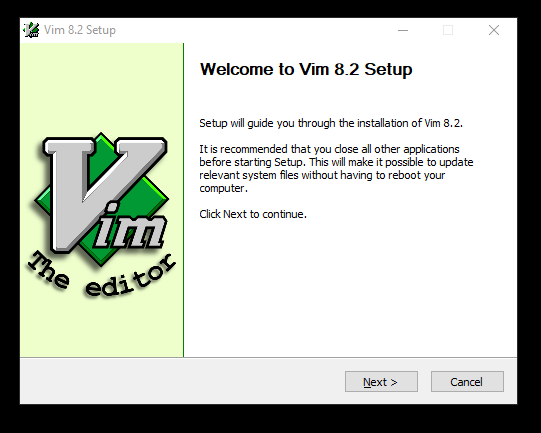

#VIM DOWNLOAD MAC INSTALL#
You can probably use the Vim without Cream install mentioned above.Python DLL) are included in this one installer.
#VIM DOWNLOAD MAC WINDOWS#

Ruby 1.8 support was included up until version 7.3.289. Includes interfaces for Lua, MzScheme, Perl, Python, Tcl. All installed files are "standard" Vim (the installers named cream- xxx.exe are for a special "Vim with Cream" version). It installs a patched standard gvim.exe (GUI) and vim.exe (console), with all help and runtime files. If you want an "Edit with Vim" item in Explorer's right-click menu, check the box for "Add Contextual Menu". On the Choose Components window, expand "Icons, menus and shortcuts".
#VIM DOWNLOAD MAC LICENSE#
Run the downloaded installer and accept the license agreement. Click the most recent gvim-7-4- xxx.exe to download. The release notes are also available they show the output of the Vim :versionĬommand which includes what features are in the build. Under "Newest Files" near the top of the list, there should be a file with a name like gvim-7-4-560.exe This lags behind the nightly builds a little to wait for any issues to be found. Get Vim without Cream: The easiest and best solution for Windows users on 32-bit systems is to use the standard Vim at. I want a more stable but still up-to-date Vim, without compiling it myself.You can try master, supports both x86 (32-bit) and 圆4 (64-bit) architectures, compiled with Xpm and DirectX support, provides "huge" feature set and scripting interfaces for Tcl, Python 2, Python 3, Ruby, Lua, Racket, and Perl.Nightly snapshot builds are available at the vim-win32-installer repository.I want the newest Vim builds, I could live with relatively untested features.InstallationĪfter installing MacVim by dragging MacVim.app to the Applications folder, open up terminal and navigate to the uncompressed folder that has mvim. Out of the box, MacVim doesn’t have support for opening a file from the command-line like vim does, but mvim cli enables us to do the same thing. One of the great things about using vim is that you can simply type vim filename.md to open a file in vim from within the terminal.

When you download a snapshot of MacVim, you’ll find a compressed file that includes MacVim.app, mvim (a command-line tool) and a README file. To get a copy of MacVim, you can grab the latest snapshot here. One of the reasons why I started using MacVim was its built in support for the yank command to copy to the system’s clipboard. MacVim is a great complement to Vim for the Mac.


 0 kommentar(er)
0 kommentar(er)
